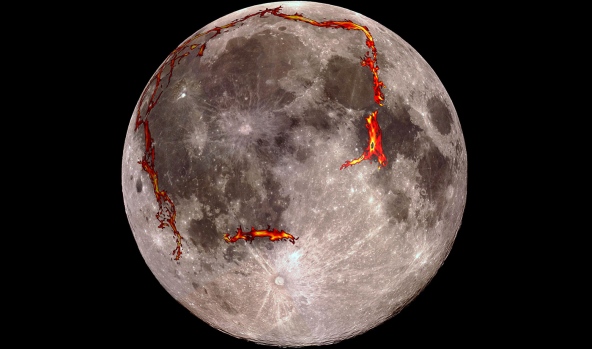MI weekly selection #95

Giant lava plain on moon likely due to tectonic stretching, not impact
The massive plain of solidified lava on the moon, known as Oceanus Procellarum, wasn’t caused by an asteroid impact as previously thought, according to a study published in Nature. Instead, researchers say, the volcanic basalt was formed by tectonic stretching, according to data gathered by NASA’s Gravity Recovery and Interior Laboratory mission. A gravitational map of the region shows an area shaped more like a rectangle than a circular shape expected from an impact.
Evidence of Majorana particle may have been found
Data that hint to a particle that is both matter and antimatter has been found by physicists who put a chain of iron atoms atop a lead superconductor. The Majorana particle, predicted by Ettore Majorana in 1937, appeared inside the superconductor as an electron at the end of a magnetic chain that had no neighbor to pair with, so it took on properties of both electrons and antielectrons.
Cerebellum growth in apes could have sparked human evolution
The growth of the cerebellum in apes spurred their evolution into humans. The growth of the neocortex and the cerebellum closely followed each other, with faster growth in the cerebellum in apes beginning about 25 million years ago.
An icy, poisonous cloud above Titan where it shouldn’t exist
Scientists are scratching their heads over an icy cloud of hydrogen cyanide drifting high in the atmosphere of Titan, one of Saturn’s moons. The cloud, which appeared in May 2012, is about 190 miles above the moon’s surface, where it should be too warm for hydrogen cyanide ice to exist.
Los Angeles Times / Science Now
Brain blood-vessel imprint left inside mummy’s skull
The blood vessels surrounding the brain of an ancient Egyptian mummy left imprints on the inside of the skull, and researchers are trying to understand how. Scientists suspect something unusual happened during the mummification process, which uses a viscous oil called bitumen, but they don’t know exactly what happened to the mummy, known as W19.